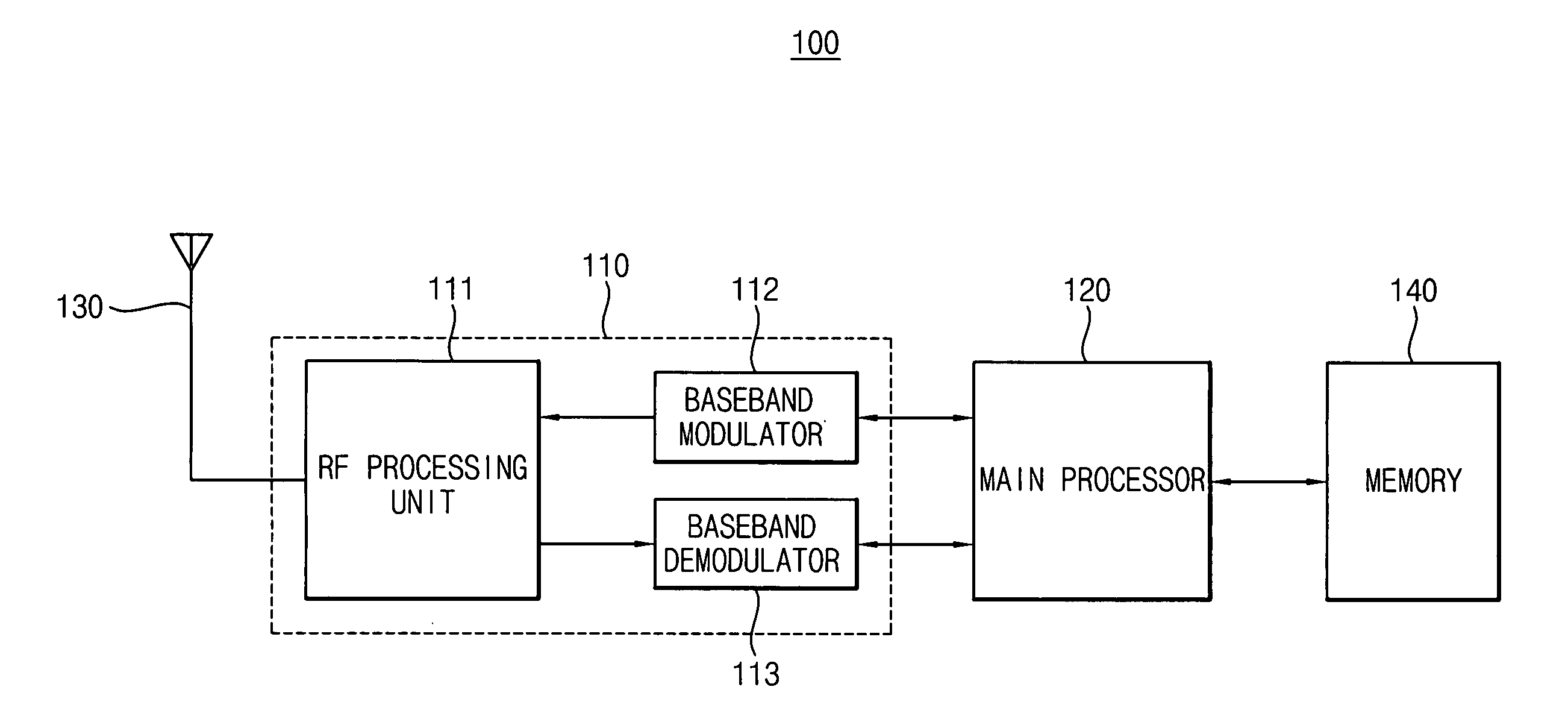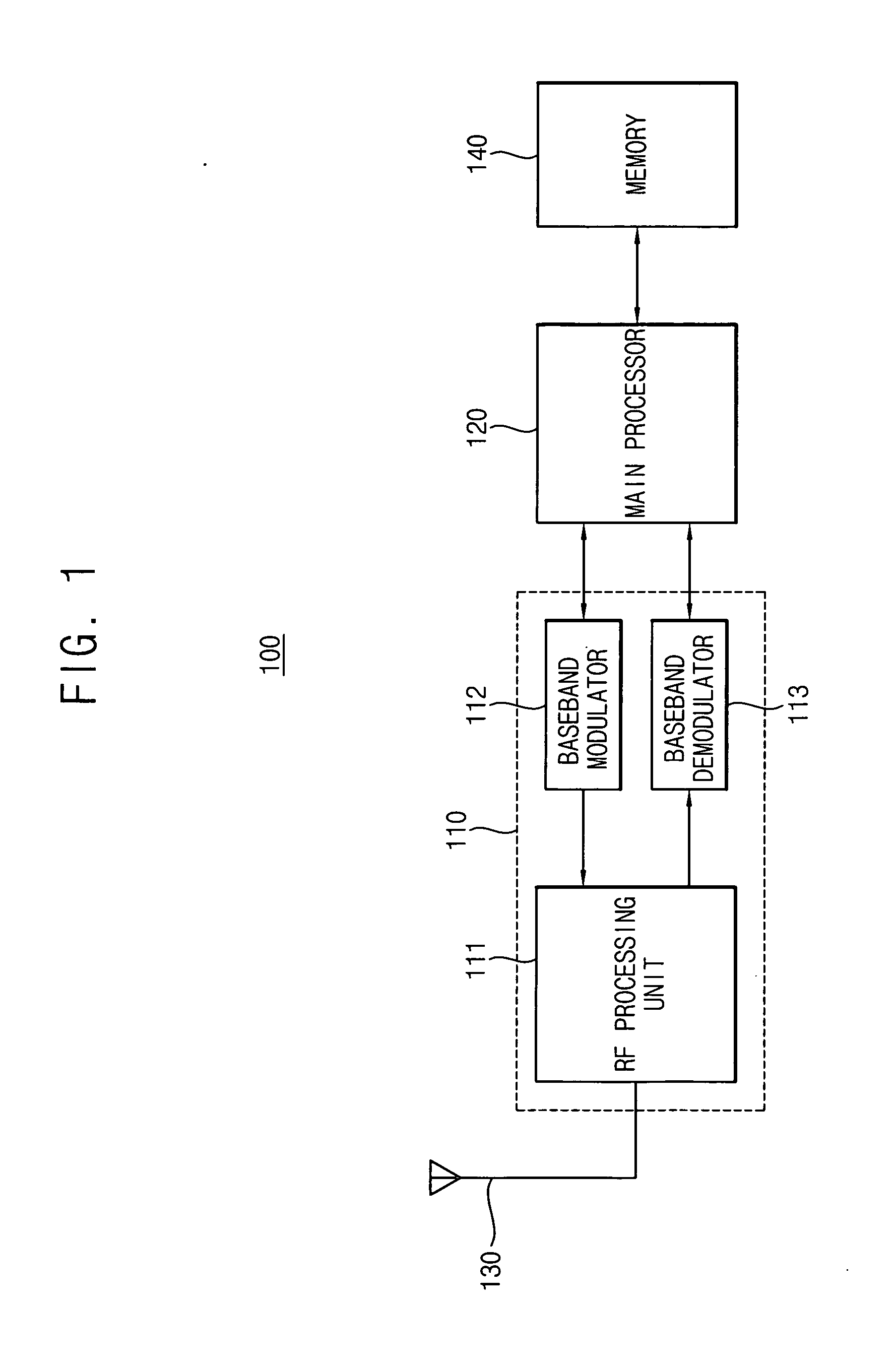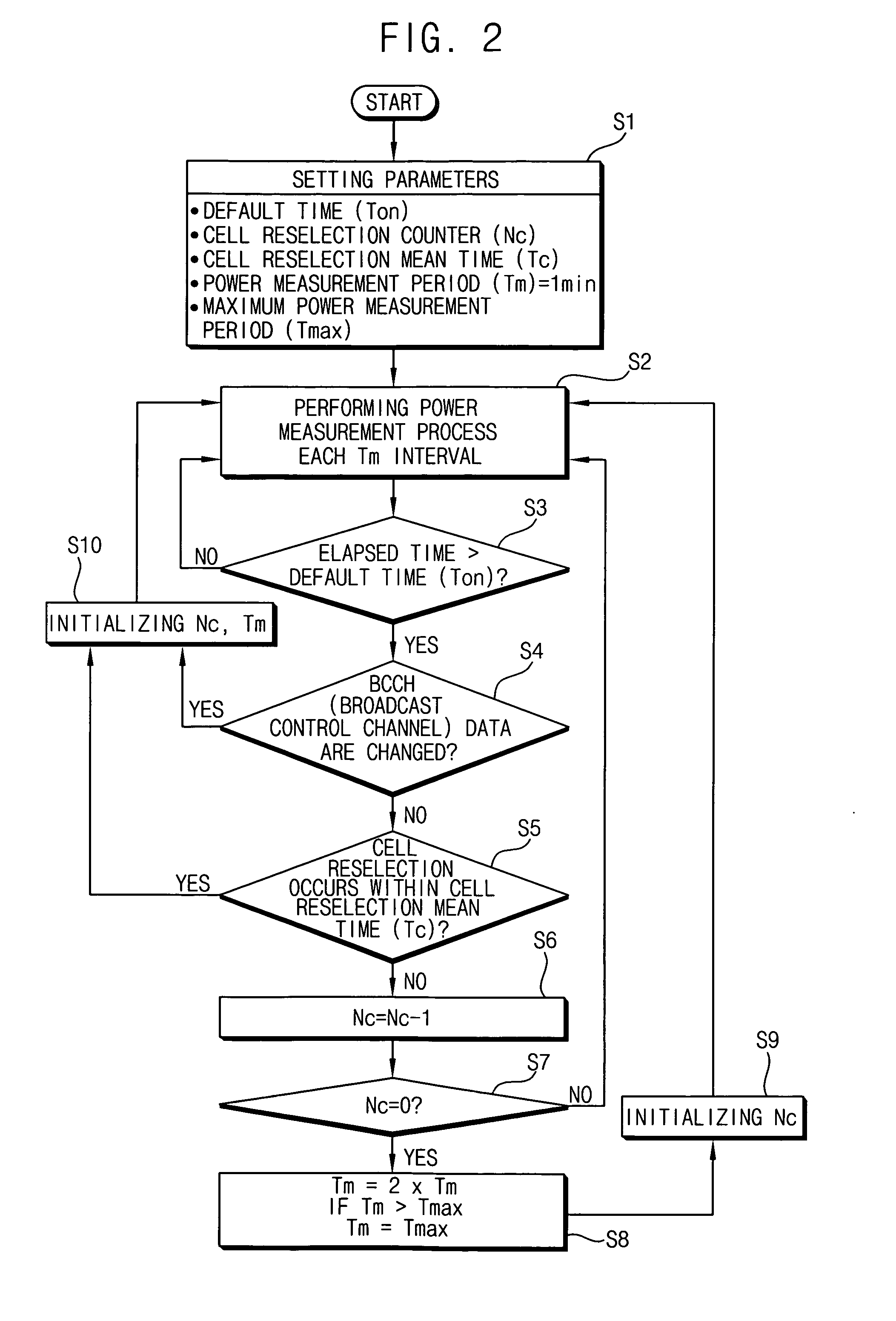Mobile device and method of adjusting a power measurement period of a received cell signal
a technology of a mobile device and a power measurement period, applied in the field of mobile communications, can solve the problems of mobile devices consuming a predetermined amount of power, power measurement process performed by modules consuming a significant amount of power, and power measurement process for cell monitoring consuming battery power of mobile devices
- Summary
- Abstract
- Description
- Claims
- Application Information
AI Technical Summary
Benefits of technology
Problems solved by technology
Method used
Image
Examples
example embodiment 1
[0067]FIG. 1 is a block diagram of a mobile device (e.g., cell-phone) 100 according to an example embodiment of the present invention.
[0068] Referring to FIG. 1, the mobile device 100 includes an antenna 130, a signal processing unit 110, a main processor 120 and a memory 140.
[0069] Of course, the mobile device 100 (e.g., a cell phone) additionally includes usual elements such as a microphone, a speaker, a liquid crystal display, a keypad and so on; however, for the sake of brevity, only elements associated with illustrating the features present invention will be illustrated and described, and other elements will be omitted.
[0070] The antenna 130 transmits / receives radio frequency (RF) signals to / from a base station. More particularly, the antenna 130 receives a plurality of cell signals, that is, a “paging blocks,” from a serving cell and from neighboring cells to transmit the received cell signals to the signal processing unit 110. Additionally, the antenna 130 transfers a radi...
example embodiment 2
[0105]FIG. 3 is a block diagram of a mobile device 200 according to another example embodiment of the present invention.
[0106] Referring to FIG. 3, the mobile device 200 includes an antenna 130, a signal processing unit 110, a memory 240, a power measurement period generation module 250 and a control module 220. Of course, the mobile device 200 further includes usual elements such as a microphone, a speaker, a liquid crystal display device, a keypad and so on; however, for the sake of brevity, in FIG. 3 and the second example embodiment of the present invention, only elements associated with important points of the present invention will be illustrated and described, and other elements not associated with the important points of the present invention will be omitted.
[0107] The antenna 130 and the signal processing unit 110 included in the mobile device 200 of FIG. 3 have a configuration and functions identical to those included in the mobile device 100 of FIG. 1, respectively.
[01...
PUM
 Login to View More
Login to View More Abstract
Description
Claims
Application Information
 Login to View More
Login to View More - R&D
- Intellectual Property
- Life Sciences
- Materials
- Tech Scout
- Unparalleled Data Quality
- Higher Quality Content
- 60% Fewer Hallucinations
Browse by: Latest US Patents, China's latest patents, Technical Efficacy Thesaurus, Application Domain, Technology Topic, Popular Technical Reports.
© 2025 PatSnap. All rights reserved.Legal|Privacy policy|Modern Slavery Act Transparency Statement|Sitemap|About US| Contact US: help@patsnap.com



